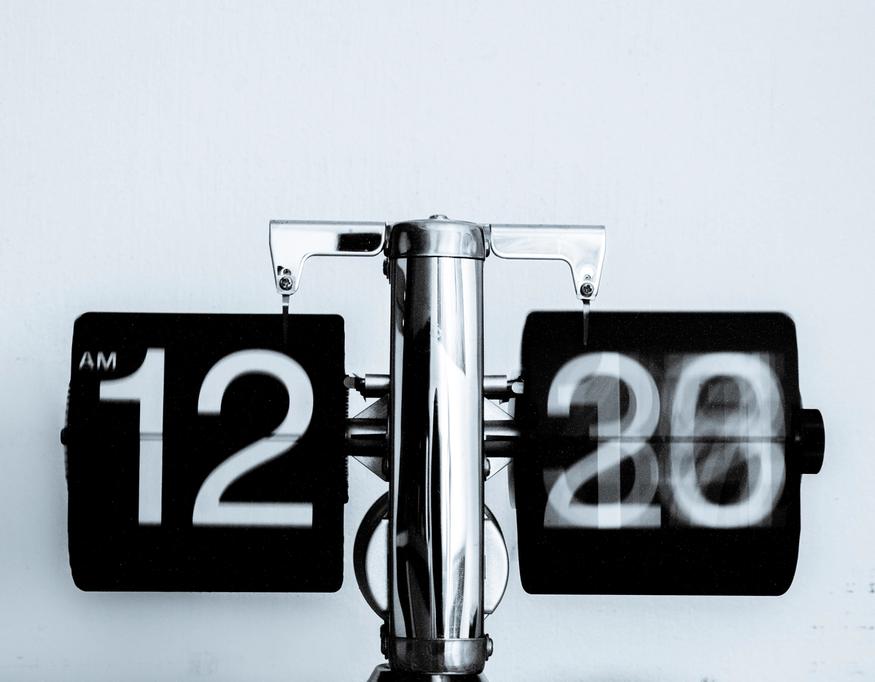How I Write an Article in an Hour
Published on 7/22/2021I work full-time in Content Marketing. It’s a job I really enjoy, but I still need my passion projects on the side, mainly working on my manuscript and writing articles. I do a lot of writing for my job, but the articles I write in my own time give me the freedom and reflection I crave. Given that I work full-time, finding the time for my own pursuits is quite a struggle. You’re constantly walking the tightrope between taking the rest time you need but also maximising your efforts and working towards your goals.
That’s why the time you do use is so important. You don’t want to spend your entire weekend working away and burning yourself out. You want to spend Saturday morning churning out two articles, and then Saturday afternoon and evening can be spent enjoying yourself - maybe with a few drinks that wipe you out for Sunday morning too! You spend enough time behind your laptop to achieve your writing goals; it’s just about how you’re using that time. You don’t need more time, just to spend it wisely. Here are the four tactics that maximise my writing session to ensure I’m hitting my goals. And at the end, I’ll tell you how long this article took me.

1. Topic choice
You should not be choosing a topic for your article when you sit down to write. This is not the time for brainstorming a topic. Every other moment of your day is about brainstorming topics, even when you don’t realise it. When you’re in the shower, lying in bed or chatting to friends, keep in mind if a potential topic or question comes up. I note them all down in a notebook to get back to them when I’m looking to write. If I don’t have my notebook, I jot it down on my phone or message it to myself on Facebook.
Now, this is when things get trickier; how far ahead do you plan what you’ll write? This is such a personal choice, and I want to be honest to admit that I’m not consistent. Sometimes I write down the topics I plan to write about in the week ahead. Sometimes a day comes, and I don’t feel like writing any of those. So I choose a new topic to write about. I really believe that passion needs to be involved in your writing, so approaching something your heart isn’t in won’t get you any results.
Either way, I start my day by knowing what I’ll write about and making that decision to ensure I don’t have to later. You’re either writing or making decisions, not both at the same time. Then I have a little pause. I don’t dive straight in. I either go for a run, shower and get ready or even just grab a coffee. I allow for a period of time where I can mull on the topic. I can think of ideas, start phrasing things or even just welcome the topic into my mind.
This ensures that when I sit down, I am ready to write and not wasting time.
2. Start with headings
The first thing I do after opening my Google Doc is write out my title and my headings. These will likely change as I go, and often I’ll add another heading as an idea comes, but having that rough framework is so helpful. It organises my thoughts and gives me a direction for the article. Little is worse than reading an unstructured article, where there is no central point or direction. It minimises your message and impact. Readers also often skim over a piece before deciding if they’ll read it or choose specific sections to read. Having such clear and focused headings ensures your reader will stay interested or at least read part of it.
By having my sections sorted, I know exactly what I’m going to write next, and the rest flows quickly. I spend about five minutes deciding on my headings, as I already know my topic, and from there, the writing goes quickly.
3. Screw chronological order
Now that you’ve got your headings, it’s about actually writing your article. Often writers are slowed down by certain sections of an article. They may feel less confident or knowledgeable about certain areas or simply less inspired. This slows them down and makes the writing process more of a chore. That’s why I throw chronological order out of the window when it comes to writing. I look at my headings and choose the one that inspires me most, the one that I’m already formulating in my head. Then I start writing that one. For example, for this article, I started with section two about headings. It seemed the most obvious and enjoyable; then I went from there. You can switch between headings as much as you like; it’s just about getting words on the page and keeping your flow.
I almost always leave my introduction for last and my conclusion for just before that. I used to do the same thing for essays whilst I was studying. I like to have all my information before I start, and even if I’ve planned my work, so much will come up on the way. So it helps to know exactly what my article is before I try to introduce or conclude it, as I know what will be discussed in it. This makes writing the introduction and conclusion far easier, as well as ensuring they’re focused and fit the tone.
4. Deep work
Writing an article in an hour or four hours is often a choice. This isn’t something fun to admit. Sometimes I’ll procrastinate and take longer than an hour when I know I don’t have to. Closing down everything that disturbs you is a choice and not an easy one to make.
The days when I write an article in an hour are the days when I shut everything else off. And usually when I join a Flown session. Flown describes themselves as organising “facilitated deep work sessions to help you with accountability and focus”. You sign up for a time slot, completely free, and then use the given Zoom link to enter the session. There are usually a dozen or more people and one facilitator. You’re put in breakout rooms to start, where you discuss your intentions for the session as well as another fun question. I usually tell people that I am to write an article and upload it, and if I feel brave, I’ll even say what the article is about. Then everyone returns to the main Zoom room, everyone mutes themselves and you all work on what you said you would. People even share links to playlists they’re listening to. I don’t know why it works so well, but it does. It could be the social interaction or accountability, it could be knowing it’s a set amount of time and then you can take a break. Whenever I join a Flown session, I get far more done than I expected. At the end of the time slot, you return to your breakout room and discuss how it went.
Whether you join a guided session, go to a cafe or just plant yourself at your desk, you need to discover exactly what works for you. Try several different methods so you actually know what helps you to be productive. And then actually do it! Too many of us know exactly what we need to get shit done and then don’t do that method. If you want to write an article in an hour, then set everything up to ensure that you succeed so there is no room for failure. Make sure you’re just writing, and that editing comes after. I use Grammarly Pro to ensure I’m mistake-free and save me the time of doing that all myself.
There are articles that will take longer than an hour, and that’s okay. Writing an article in an hour isn’t a mandatory time frame but rather a thought concept. It’s setting everything up for maximum productivity. It’s making a promise to yourself. At the end of the day, your work is about quality more than quantity. But it’s easier to find that quality within a big body of work and to start getting better and improving your writing.
Duration: 47 minutes
Curious about how this fits into my day as a Content Marketer?
Featured posts

Fleur
Welcome to Symptoms of Living! A place where I like to relieve myself of the barrage of thoughts and ideas filling my mind. Here I'll take a look at various topics, from books to BPD, series to self-harm, there's nothing that we can't, and shouldn't, talk about.
Having struggled with mental illness since the age of 15, one of the hardest parts was how alone I felt in it. While mental illness is beginning to be discussed more openly, and featured in the media, I still think there is room for improvement. So whether it is mental illness or merely mental health, a bad day or a bad year, let's make this a place to approach it and strip it back. Everyone has their own symptoms of living, and you certainly won't be the only one with it.
Would you like to receive my top monthly articles right to your inbox?
For any comments/questions/enquiries, please get in touch at:
info@byfleurine.com
I'd love to hear from you!